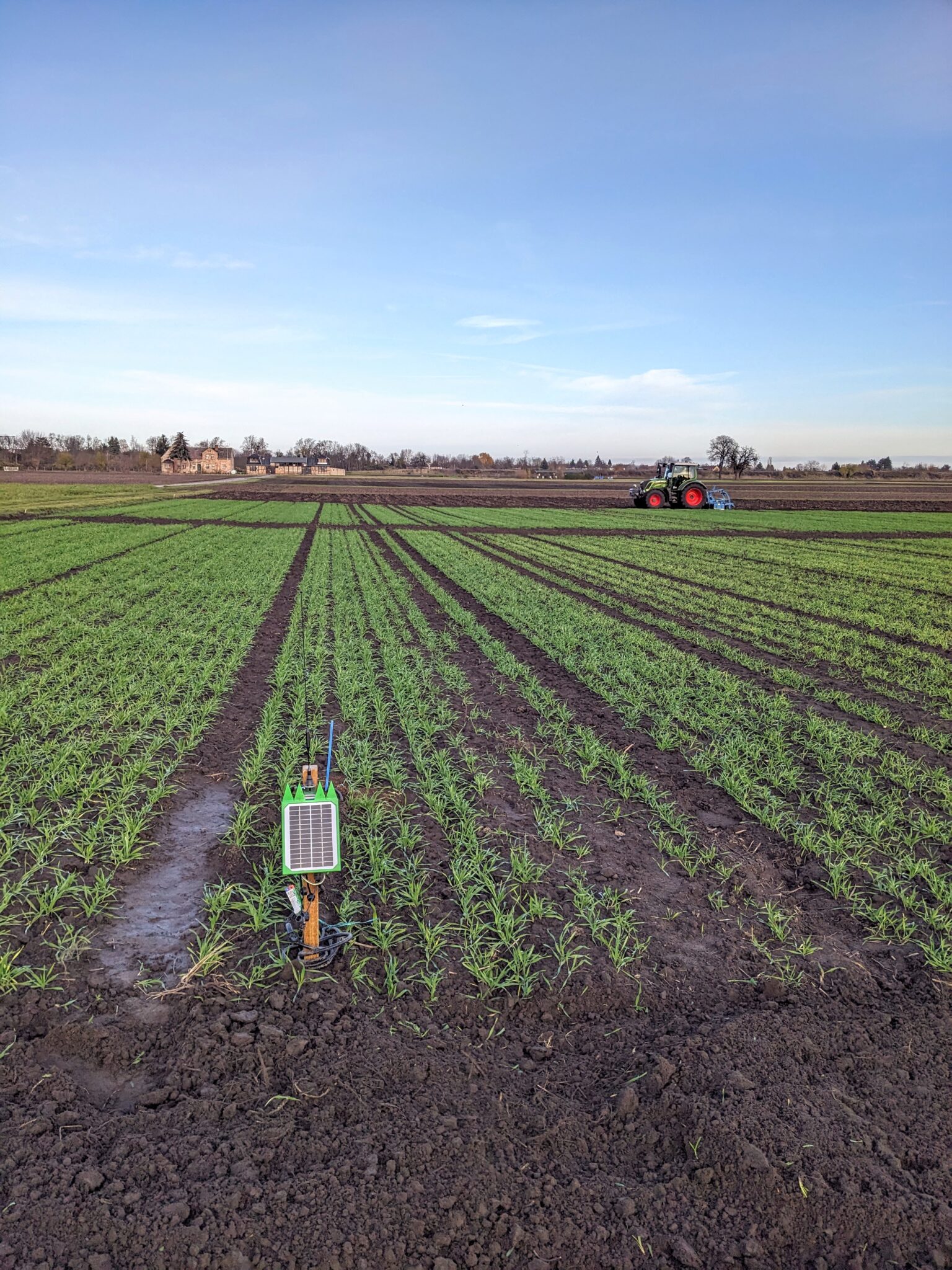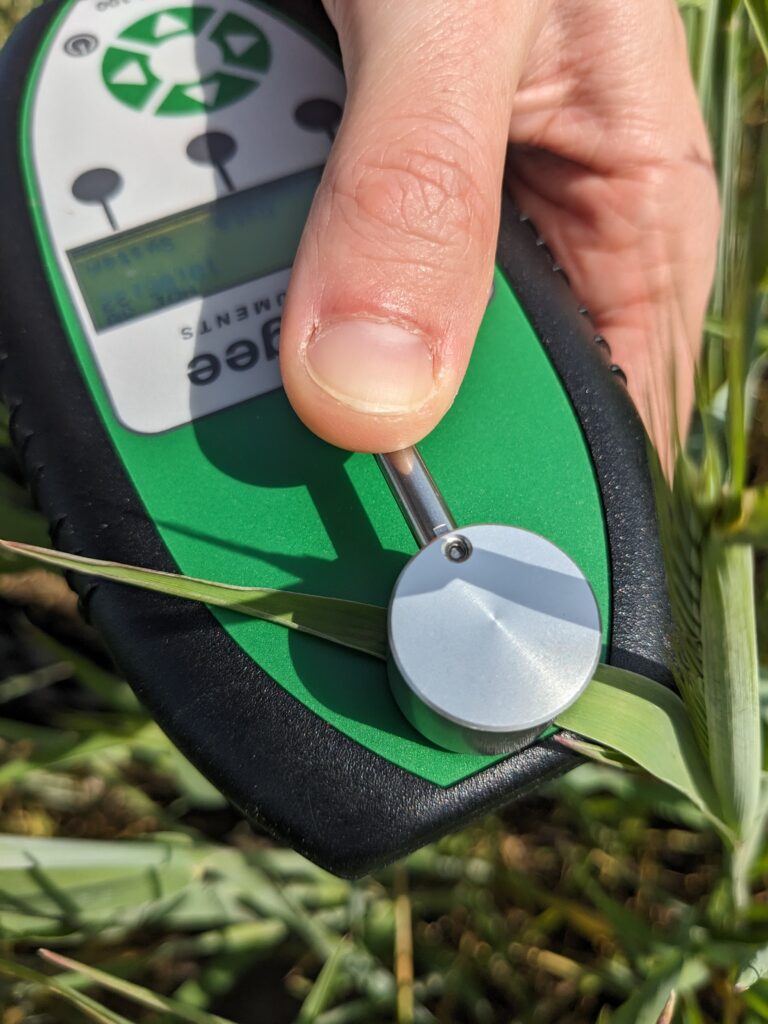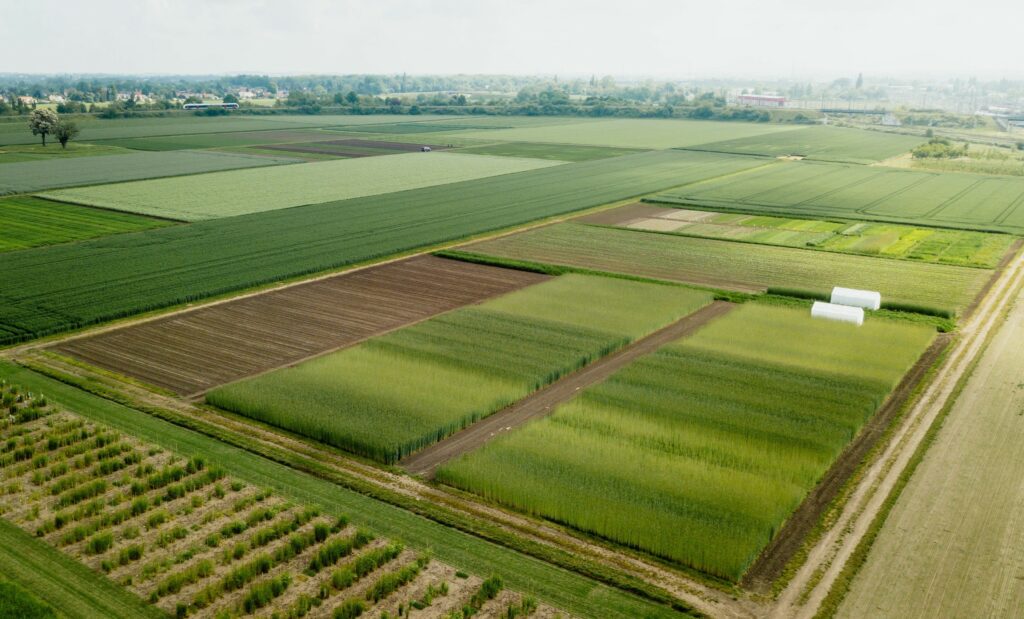Current research in the ‘Eternal Rye’ trial
The long-term field experiment Eternal Rye, established in 1878 by Julius Kühn, is the oldest experiment of its kind in Germany. For almost 150 years, six plots have been used to study how different fertilization strategies (organic, mineral, or a combination of both) affect the grain yield of winter rye. Today, the focus is on understanding how climate, plants, and soil interact.
Focus on soil moisture
One of the main risks for cereal production is water shortage, caused either by too little rainfall or by high evaporation during hot weather. Plant water availability depends not only on the weather but also strongly on soil characteristics. To study this more closely, solar-powered probes have been installed to record soil moisture and soil temperature minute by minute at depths of up to 90 cm since November 2024.
Focus on soil biodiversity
Current research also addresses soil biodiversity as a key factor for sustainable crop production. Microbial community structures and functions, such as soil respiration and enzyme activities, are assessed to better understand how fertilization and climate influence belowground biota. The soil community and its related processes are central to nutrient cycling and soil health, linking the long-term experiment to today’s challenges in agroecology.


Focus on plant vitality
Besides soil characteristics, the plants’ physiological reactions are important. Since 2024, plant traits have been recorded weekly during the growing season, such as height, development stage, ground cover, and leaf water content. These measurements are complemented by spectroscopic analyses of leaves, which provide insights into water stress or nutrient shortages. Since 2025, drone-based methods have added another dimension: RGB and hyperspectral images allow large-scale monitoring of plant growth and health.
Data integration and modelling
By combining all the data from the various fertilization treatments makes it possible to analyze the links between climate, plants, and soil in detail. The goal is to use these insights to design strategies for more climate-resilient agriculture.
A key challenge is to separate the effects of weather variability from agronomic influences such as crop variety, crop protection, or soil fertility. Traditional statistical methods often reach their limits in this area. For this reason, modern modelling approaches – especially machine learning and artificial intelligence – are increasingly applied.
The unique dataset of the Eternal Rye trial, which has been built up over more than a century, provides an exceptional foundation. Not only does it enable such methods to be tested, it also contributes to their improvement and the aim of producing reliable yield forecasts under changing climate conditions.

